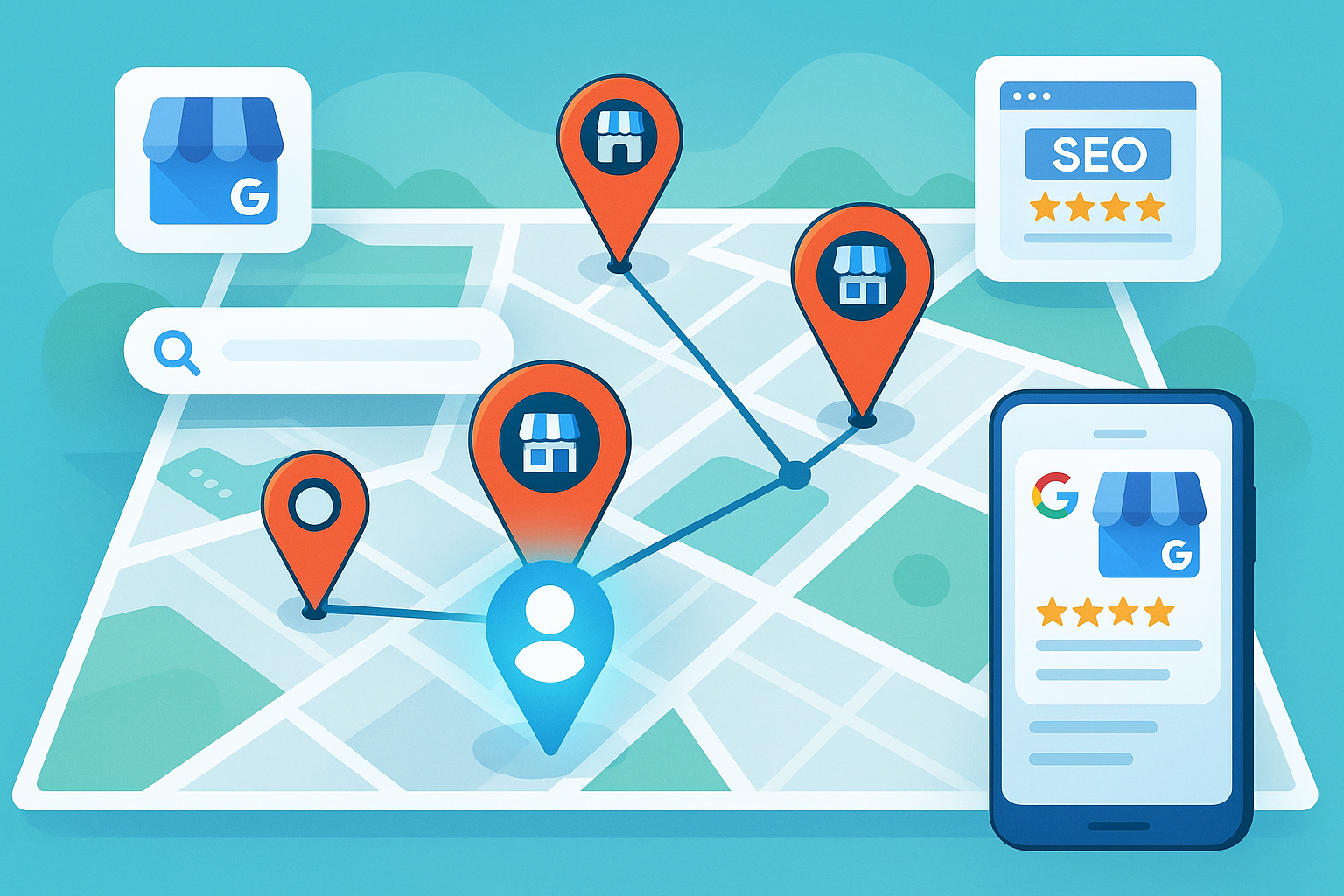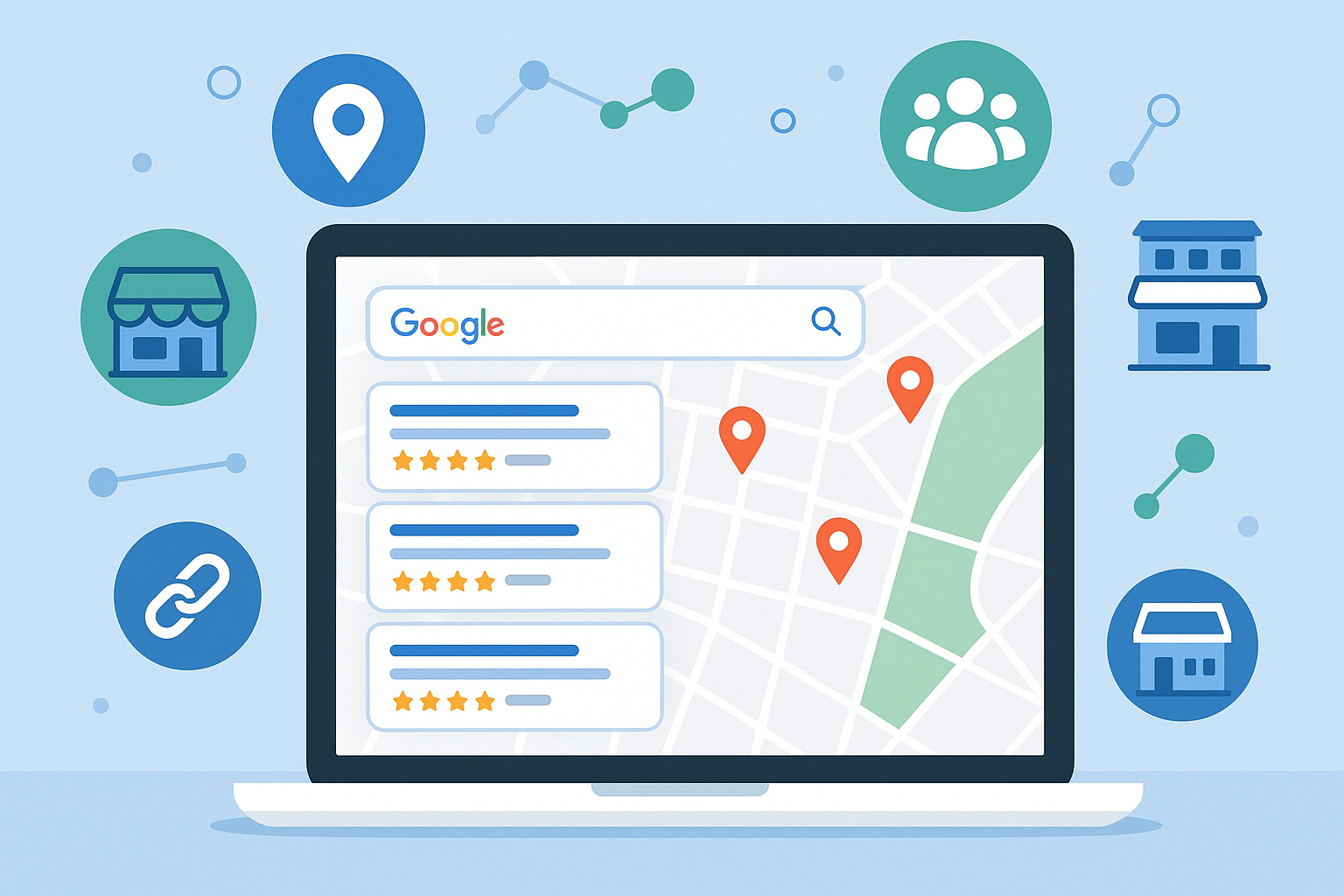How to Use Google Maps Insights to Drive Business Growth
Visibility is more than just showing up on Google—it’s knowing exactly how customers find your business, what they interact with, and where they’re coming from. Google Maps Insights provides this kind of actionable intelligence, transforming your Google Business Profile (GBP) from a static listing into a dynamic marketing tool.
For small and local businesses, every click, call, and direction request matters. Understanding these interactions can shift your strategy from guesswork to data-driven decisions, helping you reach more nearby customers and increase conversions. This guide will show you how to interpret Google Maps Insights, leverage the data, and integrate it into a marketing strategy that fuels growth.
Why Google Maps Insights Matters for Local Businesses
Google Maps is often the first place potential customers encounter your business. Unlike traditional advertising, the data behind these interactions reveals what drives real engagement—calls, website visits, and in-person visits.
Key benefits of using Maps Insights:
- Customer Intent Data: Learn whether people are finding you through direct searches, discovery searches, or branded searches.
- Action Tracking: Monitor how many users called, visited your website, or requested directions.
- Performance Over Time: Identify seasonal patterns and long-term growth trends.
By understanding these signals, you can refine marketing campaigns, identify high-value locations, and improve your GBP for maximum visibility. In short, Maps Insights tells you not just who your audience is, but how they act.
Navigating the Google Maps Insights Dashboard
The first step in using Maps Insights is understanding its dashboard. Log into your Google Business Profile at business.google.com, then click “Performance” or “Insights.” Key sections include:
- How Customers Find Your Business – Categorizes searches as direct, discovery, or branded.
- Where Customers View Your Business – Shows whether searches occurred via Google Search or Maps.
- Customer Actions – Displays clicks to your website, calls, or direction requests.
- Photo and Post Performance – Tracks engagement with images and updates.
Each section provides metrics that reveal visibility patterns and user behavior. Learning to interpret these insights allows you to make data-driven decisions to improve engagement and reach.
Understanding Direct, Discovery, and Branded Searches
Google separates searches into three types:
- Direct Searches: Users type your exact business name or address.
- Discovery Searches: Users look for products or services you provide, often including “near me.”
- Branded Searches: Users search for brands related to your business.
Monitoring these search types tells you:
- Direct searches indicate strong brand recognition.
- Discovery searches show how well you rank for relevant services.
- Branded searches highlight your association with trusted industry names.
Tracking these metrics enables you to optimize content, business descriptions, and categories for higher visibility across search types.
Measuring Customer Actions for Real Engagement
Views alone aren’t enough—actions drive growth. Maps Insights tracks:
- Website Visits: Shows interest beyond the profile.
- Phone Calls: Indicates active leads ready to engage.
- Direction Requests: Reveals in-person traffic potential.
For example:
- A rise in
direction requests often correlates with higher foot traffic.
- More
phone calls indicate immediate interest in your services.
- Increased
website visits suggest compelling content on your GBP.
By correlating spikes in these actions with campaigns, posts, or seasonal offers, you can refine strategies that consistently generate results.
Analyzing Direction Requests for Local Targeting
Direction requests provide a clear map of where your customers are coming from. This insight can help you:
- Identify
top-performing neighborhoods.
- Discover
untapped areas for marketing campaigns.
- Focus
local promotions where engagement is highest.
For example, a restaurant noticing most requests from nearby suburbs could target social media ads to those areas or create neighborhood-specific promotions. Direction requests also inform geo-targeted SEO and content strategies, ensuring you optimize for locations that matter most.
Using Photo and Post Insights to Boost Engagement
Visuals are a major trust signal. Maps Insights tracks:
- Photo Views: How your images perform relative to competitors.
- Post Interactions: Engagement with updates, offers, and announcements.
Tips for boosting engagement:
- Feature
staff, customers, or real-life scenarios over stock images.
- Showcase
before-and-after projects for service businesses.
- Update posts and photos regularly—Google rewards fresh content.
Consistently engaging visual content can increase visibility, clicks, and ultimately conversions.
Integrating Maps Insights with Your Marketing Strategy
Insights should complement your broader marketing efforts:
- Website Analytics Alignment: Compare spikes in calls or direction requests with website traffic.
- Ad Targeting: Focus local advertising where engagement data indicates opportunity.
- Content Planning: Prioritize services, offers, or locations performing well in discovery searches.
- SEO Adjustments: Use popular search terms and categories from Insights to optimize your profile.
When used strategically, Google Maps Insights creates a data-driven feedback loop that strengthens every element of your marketing strategy.
Tracking Trends Over Time
Long-term trends reveal growth patterns and seasonal shifts. Metrics to track include:
- Changes in calls, direction requests, and website clicks after new campaigns.
- Discovery search performance improvements after category optimizations.
- Seasonal spikes in engagement that can guide promotions or staffing.
Monitoring trends over time allows you to identify what works, replicate successes, and refine areas that need improvement.
Leveraging Maps Insights for Competitive Advantage
Insights also provide context relative to competitors. You can analyze:
- Photo performance compared to nearby businesses.
- Customer engagement benchmarks.
- Search and map view trends against similar businesses.
By reviewing competitor data, you can:
- Improve photo and post quality to match or exceed competitors.
- Refine categories or keywords if you’re underperforming in discovery searches.
- Amplify tactics that already deliver strong engagement.
This approach gives you a strategic edge in the local market.
Turning Insights Into Actionable Growth
Data is only valuable when applied. Use insights to:
- Optimize your profile if discovery searches are low.
- Refresh photos, posts, or hours if calls or direction requests drop.
- Launch local campaigns targeting neighborhoods with strong engagement.
- Audit your website if engagement is high but conversions are low.
By continuously reviewing and acting on Maps Insights, you stay ahead of trends and competition, ensuring sustainable local business growth.
Google Maps Insights transforms your Google Business Profile into a powerful growth tool. From tracking search types and customer actions to leveraging visual content and location data, these insights give you a clear view of customer behavior. By integrating this data into marketing strategies, local businesses can optimize visibility, drive more engagement, and capture nearby customers more effectively. At GetPhound, we help businesses turn Maps Insights into actionable growth, ensuring every local marketing decision is backed by data.












